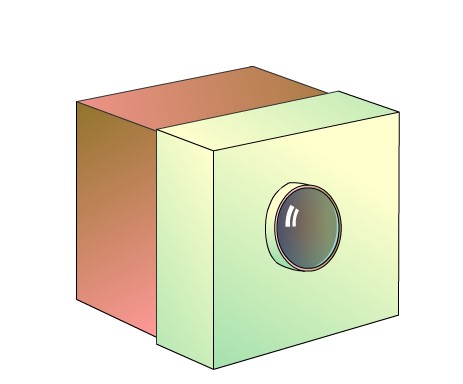A
dry cell is a portable battery used in torches, transistor radio sets,
calculators, digital watches, etc. as a source of electricity. A conventional
dry cell consists of a cylindrical vessel of zinc with a carbon rod in its
centre. A paste of manganese dioxide and ammonium chloride is filled in it.
When the zinc vessel and carbon rod are connected to a bulb by means of a wire,
the bulb glows due to the flow of current. The voltage of such a cell is about
1.5 volt. You can make a model of such a dry cell as follows.
 |
| *** MATERIALS REQUIRED *** |
- Take some water and mix starch in it. Boil the mixture till the starch forms a thick paste. Mix sufficient quantity of manganese dioxide with the paste of starch, making a very thick paste of manganese dioxide.
- Take the zinc plate and uniformly spread the manganese dioxide paste over it.
- Take some cotton wool, spread it to the size of the zinc plate and soak it in the saturated solution of ammonium chloride. Put it over the layer of paste. Put another layer of manganese dioxide paste over it.
- Now, put a carbon plate on the above layer of manganese dioxide. Your dry cell Is ready for use.
- Take two copper wires. Connect their two ends to two crocodile clips and other two ends to a bulb holder. Clip the zinc plate and carbon plate with the two crocodile clips separately. The electric current will flow through the bulb and the bulb will glow.
NOTE :-
There are three main types of dry cell batteries: Carbon-zinc, alkaline and
mercury. The one described here is a carbon-zinc dry cell.
An alkaline dry cell battery is more powerful. It lasts five to eight times longer than a carbon-zinc battery. It has a carbon electrode and a zinc casing electrode. The electrolyte is a strong alkali solution, potassium
hydroxide. Alkaline dry cells are used mainly for portable radios.
mercury. The one described here is a carbon-zinc dry cell.
An alkaline dry cell battery is more powerful. It lasts five to eight times longer than a carbon-zinc battery. It has a carbon electrode and a zinc casing electrode. The electrolyte is a strong alkali solution, potassium
hydroxide. Alkaline dry cells are used mainly for portable radios.
In
a mercury dry cell, the voltage remains constant to the end of the battery’s
life. These are used in toy cars, electric razors, deaf aids etc. Electric
toothbrushes often use this type of cells. In this cell, a mercuric
oxide electrode is used. The other electrode is the zinc casing. The
electrolyte is potassium hydroxide. Nickel cadmium batteries though wet
cell batteries can be sealed air tight and are ideal for use in portable tools
and equipments.
oxide electrode is used. The other electrode is the zinc casing. The
electrolyte is potassium hydroxide. Nickel cadmium batteries though wet
cell batteries can be sealed air tight and are ideal for use in portable tools
and equipments.
































